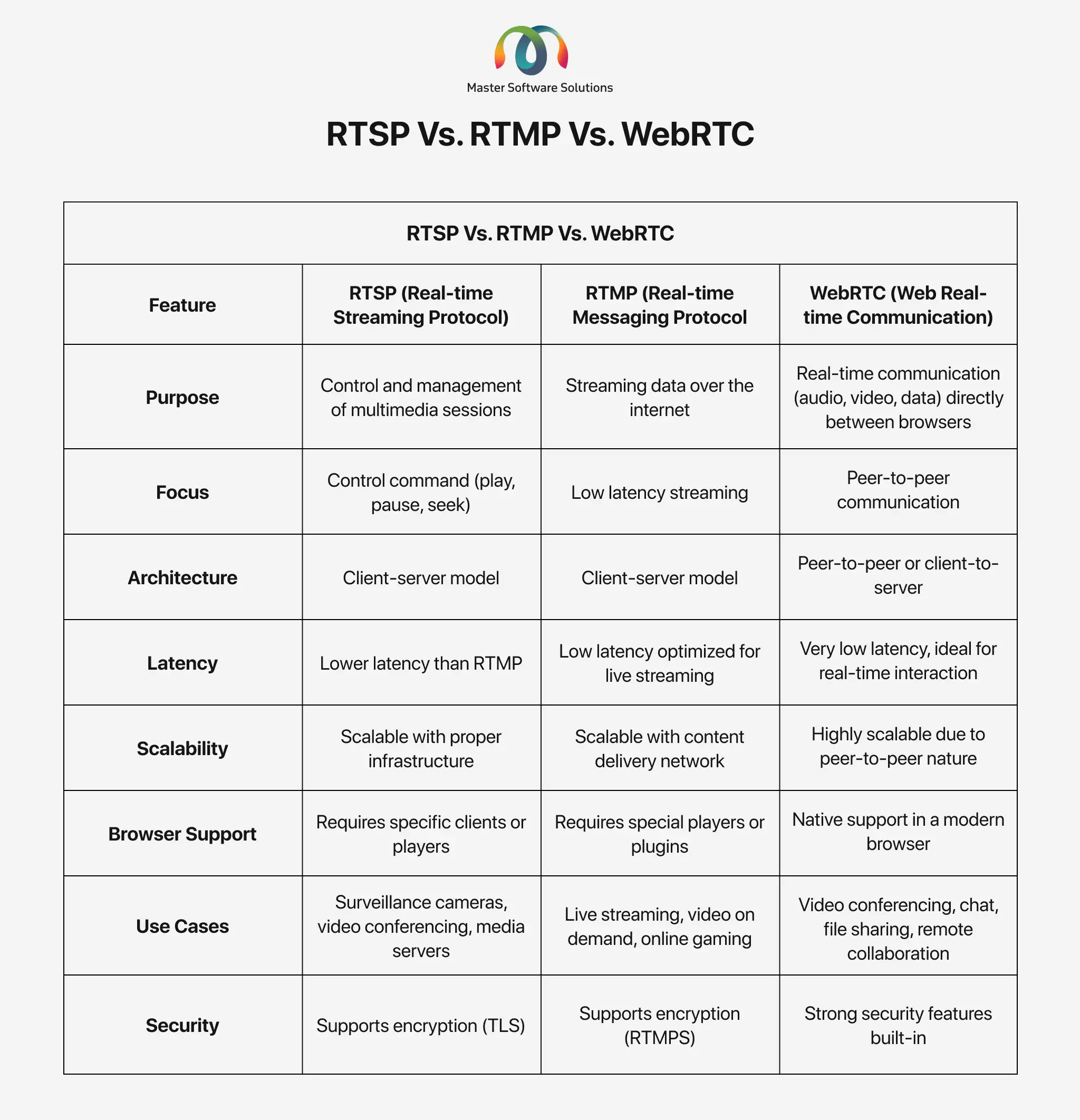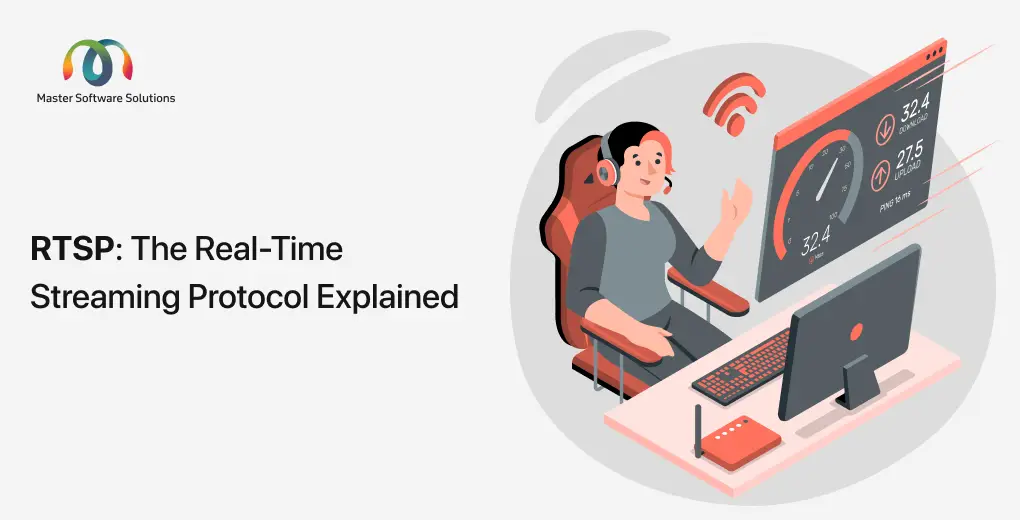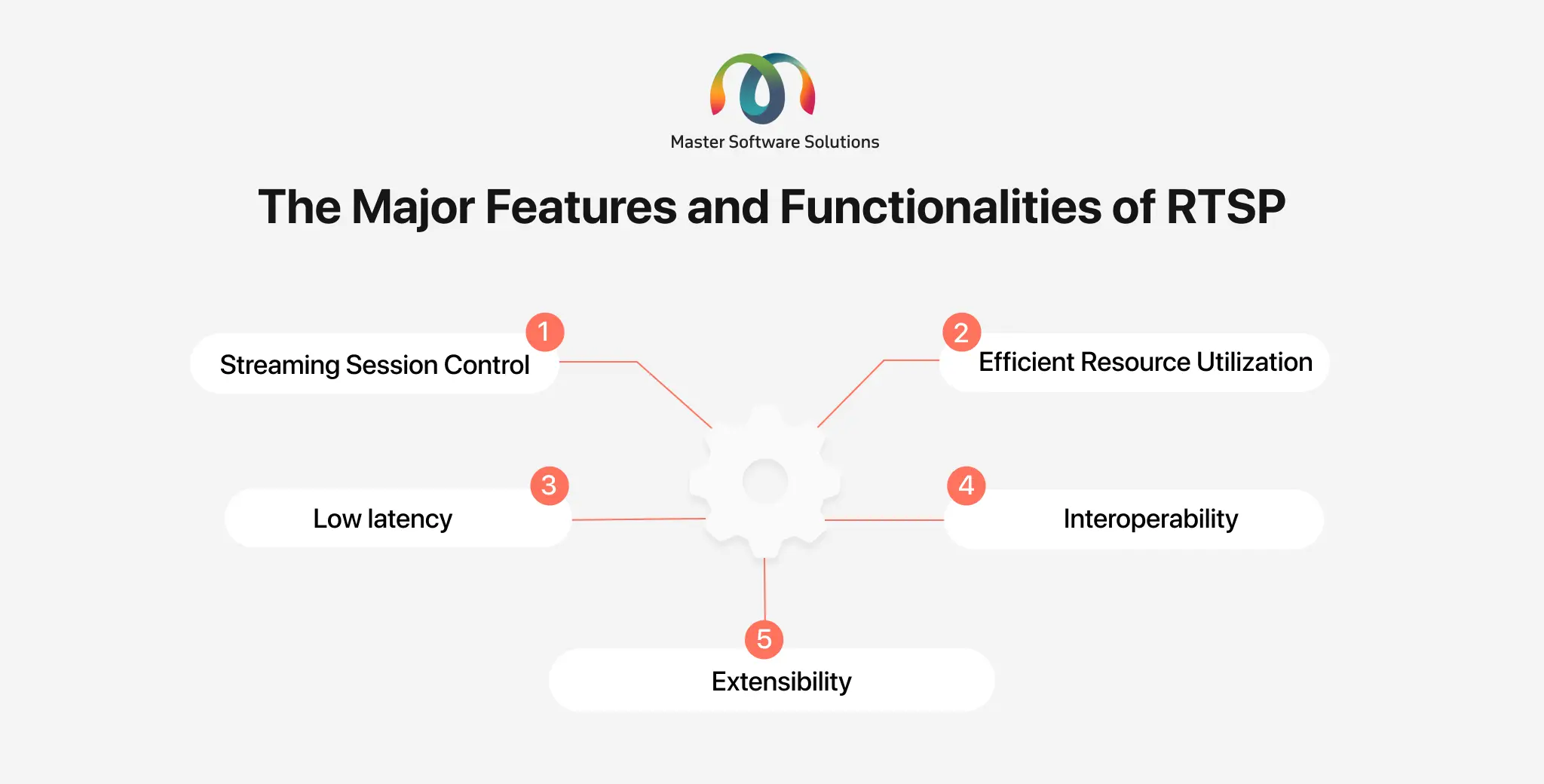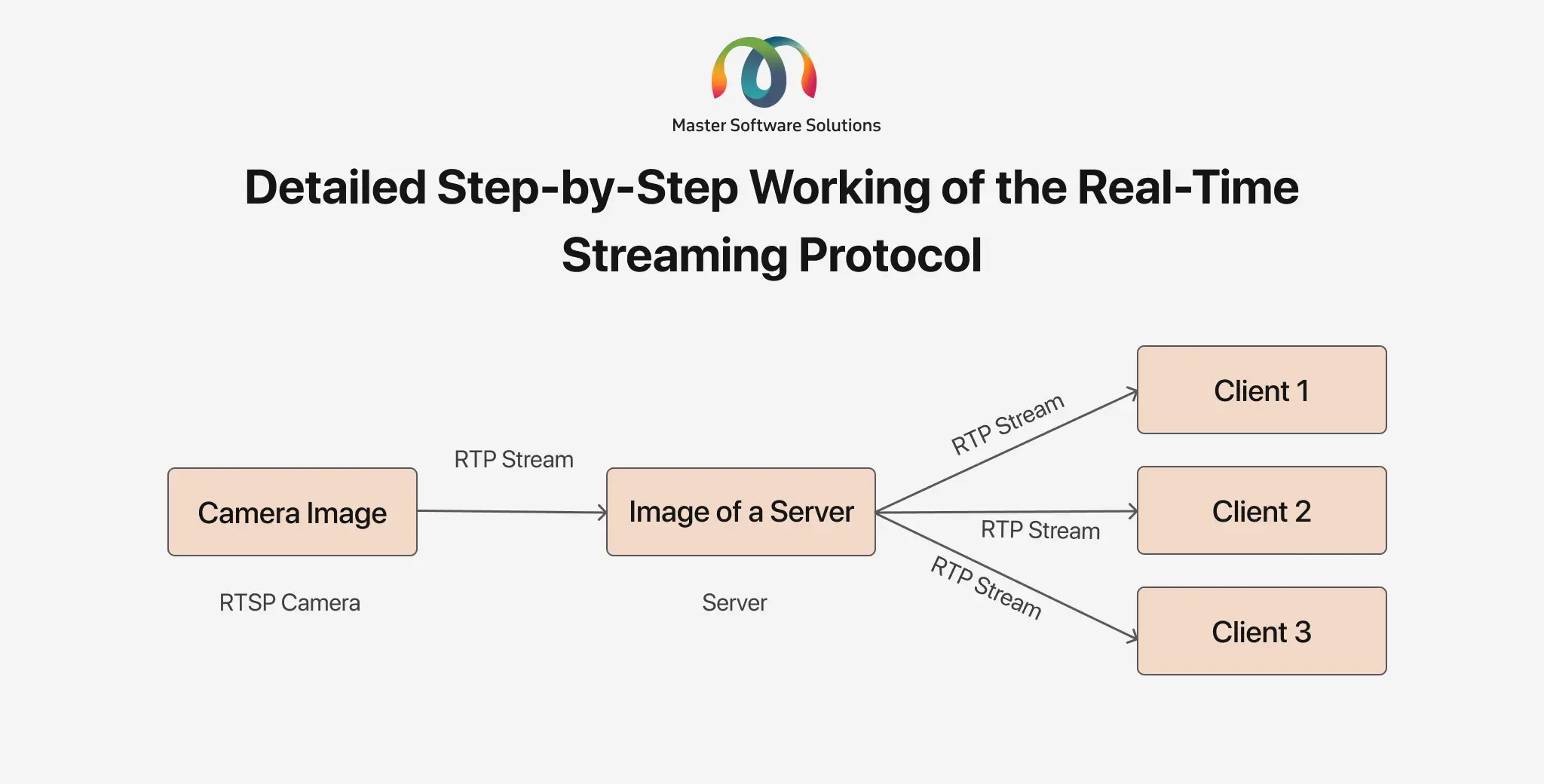RTSP: The Real-Time Streaming Protocol
Online or real-time streaming has become a crucial part of our daily lives. The real-time streaming protocol is at the heart of many applications, including video calls and broadcasting to online gaming and surveillance systems. RTSP allows client devices to control the multimedia sessions. It enables efficient resource utilization to stream audio/video in real time.
In this blog we’ll cover:
What is a real-time streaming protocol?
Real-time streaming protocol or RTSP, is a network control protocol that enables you to control media streaming. It is a great tool for streaming audio and video or sharing multimedia files in real time.
RTSP was developed by the Internet Engineering Task Force (IETF) in 1998. It can also be used to negotiate streaming media delivery. The protocol applies to many applications, including Internet radio, IPTV (Internet Protocol Television), and on-demand video.
Various media players and servers support RTSP and other streamlining protocols, such as Real-time Transport Protocol (RTP) and Real-time Transport Control Protocol (RTCP), to transmit audio and video content over the media.
Features of RTSP
RTSP offers various features and functionalities for seamless live streaming and provides playback controls. It offers a flexible framework for controlling and managing multimedia. The major features and functionalities of RTSP are:
Streaming session control
RTSP empowers users with playback control. They can initiate, pause, resume, and stop the media streams. Users can also choose and jump to specific points within the stream and adjust and control the speed of the multimedia.
Efficient resource utilization
The real-time streaming protocol allows efficient bandwidth usage and can stream 4K and even 8K videos. RTSP considers the client’s request and only streams what is needed.
Low latency
RTSP enables users to deliver media with minimal delay and is suitable for live events and interactive applications.
Interoperability
This streaming protocol is compatible with various streaming technologies and media formats and supports unicast and multicast streaming.
Extensibility
The protocol can be customized to add new features and upgrade the existing ones, making the technology future-proof.
How does RTSP work?
RTSP is responsible for the live stream from a remote source. To do so, the user sends a request from the client device to the server to use options, such as pause, play, and record. Here is a detailed step-by-step working of the Real-time Streaming Protocol:
Step 1: User sends an RTSP request to the server (streaming media server) to establish a media session.
Step 2: Server responds with a session description that includes information about the streaming media, its format, and the transport protocol.
Step 3: Client and server exchange the RTSP commands (to pause, play, or record) and respond to control the flow of the media sessions.
Step 4: Server transfers the media based on the pre-determined transcript protocols (RTP or RTCP).
Step 5: Client can send an RTSP “teardown” command to terminate the session.
RTSP uses Transmission Control Protocol (TCP) as a transport protocol. It provides a reliable connection for RTSP commands and responses. Real media is transmitted using the UDP (User Datagram Protocol) protocol, similar to RTP, for low latency and efficient media streaming.
Why is RTSP important?
RTSP is essential for gaining streaming control. It allows servers and clients to arrange real-time media delivery. The real-time streaming protocol offers a set of commands that enable users to control the flow of the media session.
It is used in various applications and is supported by many media players and servers. RTSP is also used with other streaming protocols for real-time media streaming.
The protocol transmits low-latency media for live streaming and interactions. It offers media session control and enables users to pause, seek, and adjust the volume of the streamed media.
What are the components of RTSP?
RTSP consists of various components, enabling users to stream in real-time. Here are the components of RTSP:
Clients
They are media players or other software programs that can send RTSP requests to the server to establish the connection.
Servers
They are media streaming servers that receive the RTSP request and respond with streaming descriptions and other information. They stream media depending on the pre-defined transport protocol.
RTSP requests and responses
The protocol uses a set of requests and responses to build and control session media.
Transport protocol
RTSP uses Transmission Control Protocol (TCP), a transport protocol, to exchange requests and responses. UDP protocol transports real audio/video content.
Session description
The description includes information about streaming media, including format, transport protocol, and media location. During session setup, this information is exchanged between the client and the server.
Media
The media is generally audio and video; however, RTSP can stream other data types. The media is delivered to the client on the agreed terms.
RTSP Vs. RTMP Vs. WebRTC

Real-time audio and video content delivery over the Internet requires live streaming protocols like RTSP, RTMP, and WebRTC. It is crucial to choose the right protocol, which depends on your targeted audience, device compatibility, network conditions, and specific use cases.
- RTSP – Great for controlling multimedia streams but may require specialized clients.
- RTMP – Popular for live streaming but has limitations with browser compatibility.
- WebRTC – Real-time communication within web browsers and uses peer-to-peer connections for minimal latency and scalability.
When should you opt for the RTSP protocol?
Real-time Streaming Protocol is suitable if you are looking for:
Control over streaming
- Surveillance cameras – Users need precise control for monitoring, pausing, rewinding, and reviewing footage. They also want remote access and control of cameras.
- Video conferencing – The RTSP offers interactive control to enhance the user experience and allows you to control multiple streams simultaneously.
Interoperability with existing systems
- Legacy system integrations – Existing systems, such as IP cameras and surveillance systems, support the RTSP protocol and allow seamless integration with your existing infrastructure.
Low latency is not a concern
- On-demand video – RTSP can be used for on-demand videos. However, other advanced protocols like WebRTC are more optimized than RTSP.
- Interactive apps – RTSP can be used for interaction where latency is not critical.
Conclusion
RTSP can be an excellent application choice for projects that require minimal latency. Newer protocols like WebRTC are more advanced and superior in providing minimal latency real-time communication. Are you looking to develop a live-streaming platform with WebRTC development? Discuss your project with our team and see how we can help you build live-streaming applications.


